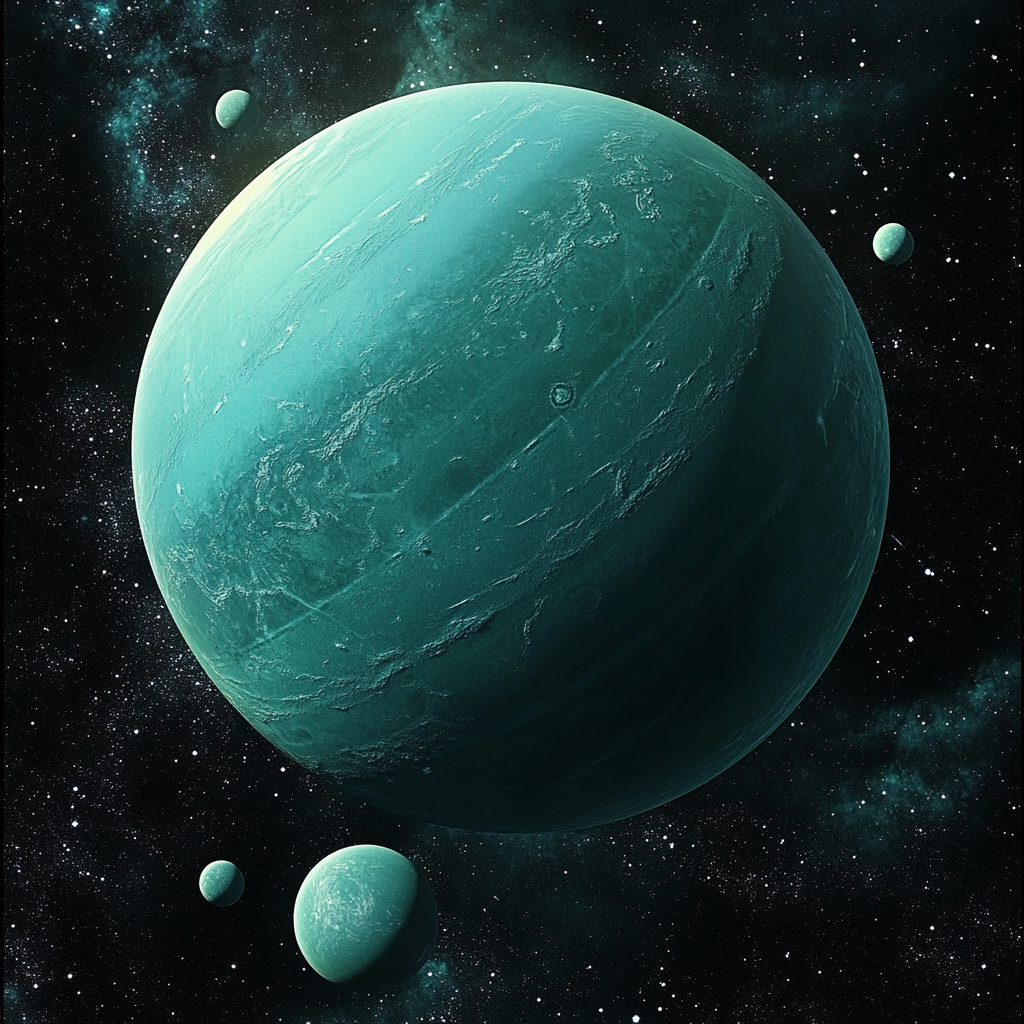
A Deep Craving for the Unraveled Secrets of the Distant Azure Giant
The Yearning for Uranus: A Cosmic Odyssey of the Blue-Green Wonder
Ah, Uranus—a planet lost in the depths of our solar system, hiding secrets, splashing color, and tilting heads with curiosity. It’s the seventh rock from the Sun and has been captivating minds since the day Sir William Herschel first dared to peek through his telescope in 1781. It’s a far-out world, no doubt, crowned with a shimmering blue-green hue that can make anyone dream of interstellar exploration. Let’s unravel this majestic ice giant, explore its eccentricities, and uncover the intriguing tales that left stargazers bewitched.
Unearthing the Discovery
When Herschel aimed his telescope, he thought he’d stumbled upon a comet. Surprise! What he discovered instead was a whole new planet. It knocked the astronomical community off its feet! At first, he proposed naming it "Georgian Sidus," celebrating King George III—how royal! Yet, our planet ended up with the more poetic name "Uranus," thanks to the cerebral Johann Bode, who reached back into the cobwebbed corners of ancient Greek mythology to find inspiration in Ouranos, the celestial deity. Fancy that!
An Ice Giant, No Less
Now, let’s dive into the physical wonders of Uranus. A splendid mix of water, ammonia, and methane gnaw at its heart, making it an “ice giant.” Its atmosphere, primarily composed of hydrogen and helium, is laced with ice crystals that contribute to that dreamy azure feel.
-
The Tilt that Tricks: Picture this: Uranus spins at a bizarre 98-degree angle, basically rolling sideways on its orbital path. That’s right! The planet is doing its own cosmic somersault, likely thanks to an ancient collision with a behemoth early in its life. It’s rare in the solar system, and that kind of anomaly tends to raise eyebrows among scientists.
-
Chilly Vibes: If you’re looking for warmth, steer away from Uranus! It boasts one of the coldest atmospheres, hitting winds of -224°C—not a great vacation spot, folks. Just think about it; Neptune might be the Planet of the Blue, but Uranus is most definitely the Ice King!
-
Rings and Moons Galore: You know what else makes Uranus a freaky fun ball? Two sets of rings encircle it—yes, rings! Plus, Uranus boasts 27 moons, each with its own quirks. Miranda, one of the most famous moons, seems to be a collage of geological chaos, a beautiful mess worthy of a local art gallery.
Whirling in Orbit and Rotation
While the rest of us are on a 365-day trip around the Sun, Uranus takes a leisurely 84 Earth years to complete its cosmic tour. One day on Uranus is a mere 17 hours and 14 minutes. Talk about a time-warp!
-
Retrograde Rotation: What’s even spicier? Uranus spins in a retrograde direction. Feeling dizzy yet? That means it rotates in the opposite direction compared to most of the other planets, giving it a unique groove.
-
Polar Sunlight Show: Thanks to its extreme tilt, Uranus pulls off this nifty trick: one of its poles basks in sunlight for around 42 years, while the other languishes in darkness for the same amount of time. Can you imagine the extreme seasonal shifts? It's either summer or winter for decades!
Voyage to the Unknown
Now, let’s get to the part that makes the sci-fi dreams of many space enthusiasts come alive—exploration! The only probe that ever sailed past Uranus was Voyager 2, which showed up in 1986. Imagine that moment; the spacecraft flying by, pulling back the curtain on a world we knew so little about.
Voyager 2 returned stunning images, transforming the alien into something relatable. Can you picture a group of scientists hunched over their screens, gasping at the sight of rings and moons? Pure magic!
A Stellar Cast of Moons
Speaking of moons, the celestial entourage of Uranus is straight out of a literary classic! Names like Miranda, Oberon, and Titania spring from the whimsical words of Shakespeare and Pope.
- Miranda: This little moon is particularly fascinating with its patchwork surface, riddled with deep canyons and age-old mysteries begging for revelation.
- Oberon and Titania: Ice and rock formations compose these moons, casting dark shadows that tell tales of a frigid existence in the depths of space.
Future Ventures in Space
But wait! The Yearning for Uranus isn’t over. Scientists have set their sights on nothing short of an interplanetary reunion. The Planetary Science Decadal Survey has earmarked a Uranus Orbiter and Probe mission as top priority, proving there’s still life in this wanderer after all!
And who can forget the ambitious crew from CNSA? They are gearing up for a flyby with a subprobe of Tianwen-4, ready to uncork more mysteries simmering in this gas giant’s icy atmosphere.
Conclusion: On the Road to Discovery
Uranus isn’t just a dot on a checklist; it’s a resonating symphony filled with curiosities and wonders that tantalize our senses. From its tilted axis to its cold embrace, from the wild surface of Miranda to the magnetic allure of its rings, Uranus captivates those daring enough to dream beyond our blue planet.
As we hurl ourselves into the future of space exploration, the yearning for Uranus will only intensify. So, what are you waiting for? You want to keep your cosmic knowledge updated? Want to stay informed with the latest news floating through the galaxies, especially on neural networks and automation? There’s a wild ride of information waiting. Subscribe to our Telegram channel: @channel_neirotoken, and let’s embark on this astronomical journey together!

